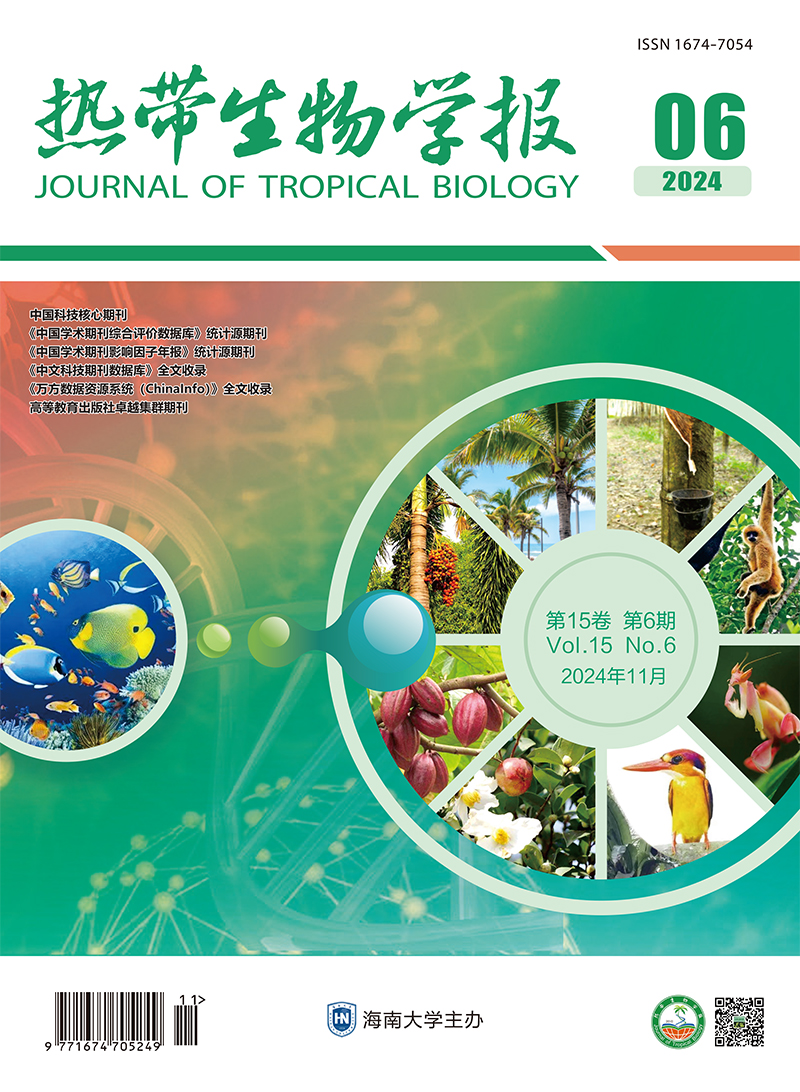|
[1]
|
陈景益,房伯平,张雄坚,等.茎尖菜用甘薯新品种'广菜薯5号'[J].园艺学报, 2021,48(S2):2861-2862. |
|
[2]
|
曹清河,季志仙,李强,等.菜用甘薯新品种薯绿1号的选育[J].中国蔬菜, 2017(3):70-72. |
|
[3]
|
|
|
[4]
|
刘中华,李华伟,许泳清,等.赏食兼用型甘薯及其应用前景[J].作物杂志, 2016(1):7-11. |
|
[5]
|
戴习彬,周志林,赵冬兰,等.优质多抗菜观两用甘薯新品种'徐菜观薯1号'[J].园艺学报, 2024, 51(S1):71-72. |
|
[6]
|
袁云香.空心菜的水培研究及其发展前景[J].北方园艺, 2012(21):190-191. |
|
[7]
|
王博伟,陈艳丽,朱国鹏,等.叶面喷施褪黑素对海南高温季节水培叶用莴苣生长生理的影响[J].中国蔬菜,2022(11):80-85. |
|
[8]
|
郭雄昌,隋秀玉,伍祎翌,等.水培条件下不同普通白菜品种镉铅累积和转运差异[J].中国蔬菜, 2022(12):64-73. |
|
[9]
|
樊宇婷,李阳,王吉庆,等.桑叶酵素液对水培小白菜生长及品质的影响[J].中国瓜菜, 2022, 35(5):28-36. |
|
[10]
|
郝金倩,王宝驹,佟静,等.外源褪黑素对水培韭菜生长和品质的影响[J].园艺学报, 2024, 51(4):847-858. |
|
[11]
|
李政璞,佟静,王丽萍,等.营养液浓度对水芹产量和品质的影响[J].中国蔬菜, 2020(12):56-60. |
|
[12]
|
齐敬伟,武占会,刘明池,等. LED灯光照条件下营养液浓度对生菜生长的影响[J].北方园艺, 2015(18):67-70. |
|
[13]
|
王瑞,胡笑涛,王文娥,等.菠菜水培不同营养液浓度的产量、品质、元素利用效率主成分分析研究[J].华北农学报, 2016, 31(S1):206-212. |
|
[14]
|
任尚杰,方伟,张国敏,等.两种浓度营养液下水培生菜和小白菜生长特性及品质研究[J].作物杂志, 2011(3):42-45. |
|
[15]
|
曾玉兰,吴学莉,孙志伟,等.不同浓度营养液对生菜产量及品质的影响[J].安徽农业科学, 2024, 52(10):43-45. |
|
[16]
|
SONG J, HUANG H, SONG S, et al. Effects of photoperiod interacted with nutrient solution concentration on nutritional quality and antioxidant and mineral content in lettuce[J]. Agronomy, 2020, 10(7):920. |
|
[17]
|
SAKAMOTO M, SUZUKI T. Effect of nutrient solution concentration on the growth of hydroponic sweetpotato[J].Agronomy, 2020, 10(11):1708-1708. |
|
[18]
|
覃华勇,聂明建,崔强旺,等.菜用甘薯水培营养液配方与品种筛选[J].江苏农业科学, 2019, 47(11):161-167. |
|
[19]
|
王建伟,许光龄,陈艳丽,等.外源茉莉酸甲酯对盐胁迫下菜用甘薯生长生理的影响[J].中国瓜菜, 2022,35(6):69-75. |
|
[20]
|
李合生.植物生理生化实验原理和技术[M].北京:高等教育出版社, 2000. 105-261. |
|
[21]
|
刘萍,李明军.植物生理学实验[M]. 2版.北京:科学出版社, 2016. 20-210. |
|
[22]
|
郑坚,陈秋夏,金川,等.不同TTC法测定枫香等阔叶树容器苗根系活力探讨[J].浙江农业科学, 2008,49(1):39-42. |
|
[23]
|
WU Q, FU X, CHEN Z, et al. Composition, color stability and antioxidant properties of betalain-based extracts from bracts of Bougainvillea[J]. Molecules, 2022, 27(16):5120. |
|
[24]
|
周元清.营养液供应对雾培生菜产量和营养品质的影响[D].杭州:浙江大学, 2014. |
|
[25]
|
赵芳,刘明池,季延海,等.营养液浓度对娃娃菜幼苗生长和生理状态的影响[J].北方园艺, 2019(22):29-34. |
|
[26]
|
黄婷.菜用甘薯耐盐品种筛选及耐盐生理响应[D].海口:海南大学, 2020. |
|
[27]
|
方舒玲.光强和营养液浓度对水培生菜生长及养分利用效率的影响[D].杨凌:西北农林科技大学, 2018. |
|
[28]
|
李杰,杨萍.不同电导率营养液对蕹菜生长、品质及产量的影响[J].中国瓜菜, 2020, 33(12):82-86. |
|
[29]
|
陈艳丽,李绍鹏,高新生,等.热带地区夏季水培小白菜营养液浓度的研究[J].新疆农业大学学报, 2010,33(5):389-393. |
|
[30]
|
刘文科,杨其长,邱志平.断氮处理对生菜中硝酸盐与维生素C含量的影响[J].华北农学报, 2011, 26(S1):114-116. |
|
[31]
|
LEE S G, CHOI C S, et al. Effects of different ec in nutrient solution on growth and quality of red mustard and pak-choi in plant factory[J]. Journal of Bio-Environment Control, 2012, 21(4):322-326. |
|
[32]
|
PANNICO A, GRAZIANI G, EL-NAKHEL C, et al.Nutritional stress suppresses nitrate content and positively impacts ascorbic acid concentration and phenolic acids profile of lettuce microgreens[J]. Italus Hortus,2020, 27(3):41-52. |
|
[33]
|
ROSA M, PRADO C, PODAZZA G, et al. Soluble sugarsmetabolism, sensing and abiotic stress:a complex network in the life of plants[J]. Plant Signaling&Behavior,2009, 4(5):388-393. |
|
[34]
|
AFZAL S, CHAUDHARY N, SINGH N K. Role of soluble sugars in metabolism and sensing under abiotic stress[M]//Aftab T, Hakeem KR. Plant Growth Regulators. Cham:Springer, 2021:305-334. |
|
[35]
|
DING X, JIANG Y, ZHAO H, et al. Electrical conductivity of nutrient solution influenced photosynthesis, quality, and antioxidant enzyme activity of pakchoi (Brassica Campestris L. ssp. Chinensis) in a hydroponic system[J].PLoS One, 2018, 13(8):e0202090. |
|
[36]
|
YOON Y E, KUPPUSAMY S, CHO K M, et al. Influence of cold stress on contents of soluble sugars, vitamin C and free amino acids including gamma-aminobutyric acid (GABA) in spinach (Spinacia oleracea)[J]. Food Chemistry, 2017, 215:185-192. |
|
[37]
|
单忠英,罗兴录,樊吴静,等.干旱胁迫对木薯苗生理特性影响研究[J].热带作物学报, 2015, 36(2):339-343. |
|
[38]
|
BARTELS D, SUNKAR R. Drought and salt tolerance in plants[J]. Critical Reviews in Plant Sciences, 2005,24(1):23-58. |
|
[39]
|
陈晨,陈雪琼,陈月珍,等.叶面施氮对芹菜叶绿素含量及代谢有关基因表达的影响[J].植物生理学报,2023, 59(8):1533-1542. |
|
[40]
|
李会琼.磷信号调控植物花青素积累的分子机理[D].昆明:云南大学, 2022. |
|
[41]
|
徐楚瑶,周波.温度胁迫调控植物花青素的生物合成[J].分子植物育种,2024:1-12. |
|
[42]
|
申宝营,吴宏琪,林碧英.低温弱光处理对茄子不同时期花青素含量及果实品质的影响[J].福建农业学报,2024, 39(3):310-319. |
|
[43]
|
|
|
[44]
|
LI Z, AHAMMED G J. Hormonal regulation of anthocyanin biosynthesis for improved stress tolerance in plants[J]. Plant Physiology and Biochemistry:PPB,2023, 201:107835. |
|
[45]
|
NAING A H, KIM C K. Abiotic stress-induced anthocyanins in plants:their role in tolerance to abiotic stresses[J].Physiologia Plantarum, 2021, 172(3):1711-1723. |
|
[46]
|
牛钰,李晶,王俊文,等.高等植物花青素生物合成、调控、生物活性及其检测的研究进展[J].浙江农业学报, 2024, 36(4):978-996. |






 DownLoad:
DownLoad: